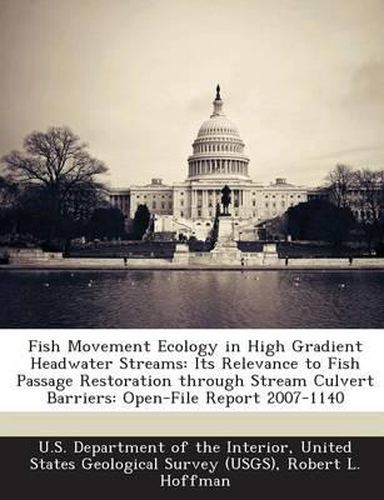Readings Newsletter
Become a Readings Member to make your shopping experience even easier.
Sign in or sign up for free!
You’re not far away from qualifying for FREE standard shipping within Australia
You’ve qualified for FREE standard shipping within Australia
The cart is loading…






Restoration of fish passage through culvert barriers has emerged as a major issue in the Pacific Northwest and nationwide. The problem has many dimensions, including the huge number of potential barriers, uncertainty about which structures are actually barriers, the benefits and risks involved with restoration, and the financial costs and timelines. This report attempts to address what we call ‘thinking outside of the pipe’ in terms of fish passage information needs. This means understanding the value of each potential passage restoration project in the context of other possible projects, and to view individual restoration projects within a larger landscape of habitats and population processes. In this report we provide a brief review of some essential characteristics of animal movement and examples from a focal group of fishes in Washington State: salmon, trout, and char. While several other fishes and many other species use streams where culvert passage barriers may occur, it is the salmonids that are by far the most widespread and in most cases extending furthest into the headwaters of stream networks in Washington. We begin this report by outlining some basic characteristics of animal movement and then apply that foundation to the case of salmonid fishes. Next we consider the consequences of disrupting fish movement with human-constructed barriers, such as culverts. Finally, this body of evidence is summarized and we propose a short list of what we view as high priority information needs to support more effective restoration of fish passage through culverts.
$9.00 standard shipping within Australia
FREE standard shipping within Australia for orders over $100.00
Express & International shipping calculated at checkout
Restoration of fish passage through culvert barriers has emerged as a major issue in the Pacific Northwest and nationwide. The problem has many dimensions, including the huge number of potential barriers, uncertainty about which structures are actually barriers, the benefits and risks involved with restoration, and the financial costs and timelines. This report attempts to address what we call ‘thinking outside of the pipe’ in terms of fish passage information needs. This means understanding the value of each potential passage restoration project in the context of other possible projects, and to view individual restoration projects within a larger landscape of habitats and population processes. In this report we provide a brief review of some essential characteristics of animal movement and examples from a focal group of fishes in Washington State: salmon, trout, and char. While several other fishes and many other species use streams where culvert passage barriers may occur, it is the salmonids that are by far the most widespread and in most cases extending furthest into the headwaters of stream networks in Washington. We begin this report by outlining some basic characteristics of animal movement and then apply that foundation to the case of salmonid fishes. Next we consider the consequences of disrupting fish movement with human-constructed barriers, such as culverts. Finally, this body of evidence is summarized and we propose a short list of what we view as high priority information needs to support more effective restoration of fish passage through culverts.